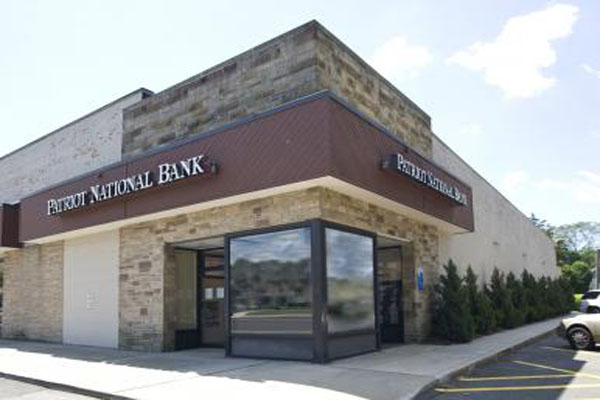
Despite the departure of its chief executive last week, Patriot National Bancorp Inc. has come back from the brink and is now focused on growing profitability and rebuilding its loan portfolio, said Chairman Michael Carrazza.
Since Carrazza acquired a controlling stake in the Stamford bank in late 2009, Patriot National has sold tens of millions of dollars in nonperforming loans and other assets, and has consolidated its footprint from 19 branches in southern Connecticut and New York to 11 branches and a loan production office.
The bank has also gotten back into the black: After reporting net losses of more than $60 million in income from 2008 through the second quarter of 2011, Patriot National reported net earnings of about $1.6 million from the third quarter of 2011 through the third quarter of 2012.
The bank has yet to report earnings for the fourth quarter.
“We recapitalized the bank and first re-stabilized it and aggressively instituted our turnaround plan to restore it back to health and profitability,” said Carrazza, whose private equity firm, Solaia Capital Advisors L.L.C., acquired a controlling interest in Patriot National through a holding company in December 2009.
“Now that all of the turnaround work is behind us … the focus has shifted to getting core earnings profitable and increasing those profit levels,” he said.
Kenneth T. Neilson, a Patriot National board member since October 2010, was named president and CEO of the bank effective March 18 with the resignation of Christopher Maher.
Neilson is the retired chairman and CEO of Hudson United Bancorp, which he piloted for 23 years.
Under his leadership, Hudson United Bank grew from a 15-branch bank with $500 million in assets in 1989 to a franchise with more than 200 branches and $9 billion in assets as of 2006, when it was sold to TD Banknorth.
Maher, who had led Patriot National since October 2010, left to take the role of president and chief operating officer of OceanFirst Financial Corp. in Toms River, N.J.
The leadership shuffle was announced in late February.
Carrazza said Neilson has been “very successful in building out and creating a tremendous amount of franchise value … that is a huge asset for Patriot to have someone like him.”
Whereas Maher had the unenviable task of restructuring the bank, Neilson is now faced with growing a small financial institution that was hammered by the financial crisis.
Patriot National reported losses of $7.1 million, or $1.50 a share, in 2008, followed by losses of $23.9 million, or $5.02 a share, in 2009.
In 2010, the year after Carrazza came on as chairman under an agreement with the previous board, Patriot National cut its losses to $15.4 million, or $1.30 a share.
The following year, which included the bulk sale of $66.8 million in non-performing assets, Patriot National reported losses of $15.5 million ”” equating to 40 cents per share. The bank reported small profits in the third and fourth quarters of that year, and in every quarter reported since.
Carrazza described the process as “a rescue recapitalization.”
“Patriot needed a lot of things when we arrived, and the first thing it needed was stability and an aggressive turnaround plan to recover it from the massive losses it had amassed as a result of the crisis,” he said.
He and the revamped board initially “made some very tactical, strategic decisions” to shrink the bank, which has eight fewer branches today than when Carrazza assumed his controlling interest.
“We shrunk the bank to get it to a level where we could operate it more efficiently and profitably,” Carrazza said. “Now that we”™ve fixed many of the critical issues, the focus is back onto growth.”
In the third quarter of 2012, Patriot National reduced operating expenses by 8.6 percent compared to the previous quarter.
Non-performing assets comprised 5.1 percent of the bank”™s total assets as of Sept. 30, 2012, up from 2.9 percent as of June 30, 2012, and 4.2 percent as of Sept. 30, 2011.
However, the bank attributed the increase to four owner-occupied residential real estate loans that it moved to non-accrual status during the third quarter. That action contributed largely to a $12.6 million increase in the bank”™s non-interest-accruing loans.
Patriot National”™s total loan portfolio increased 8.8 percent to $493 million for the year ending Sept. 30, 2012.
Carrazza said the bank will continue to grow its small business portfolio.
“When the crisis hit, everybody was internally focused to clean out their own portfolio and was less concerned about portfolio growth,” he said. “Patriot is open for business and we”™re very aggressively looking to build our small business loan portfolio.”
Under a June 2010 agreement with the Federal Reserve, Patriot National cannot pay dividends or reduce its capital without the approval of the Fed.















